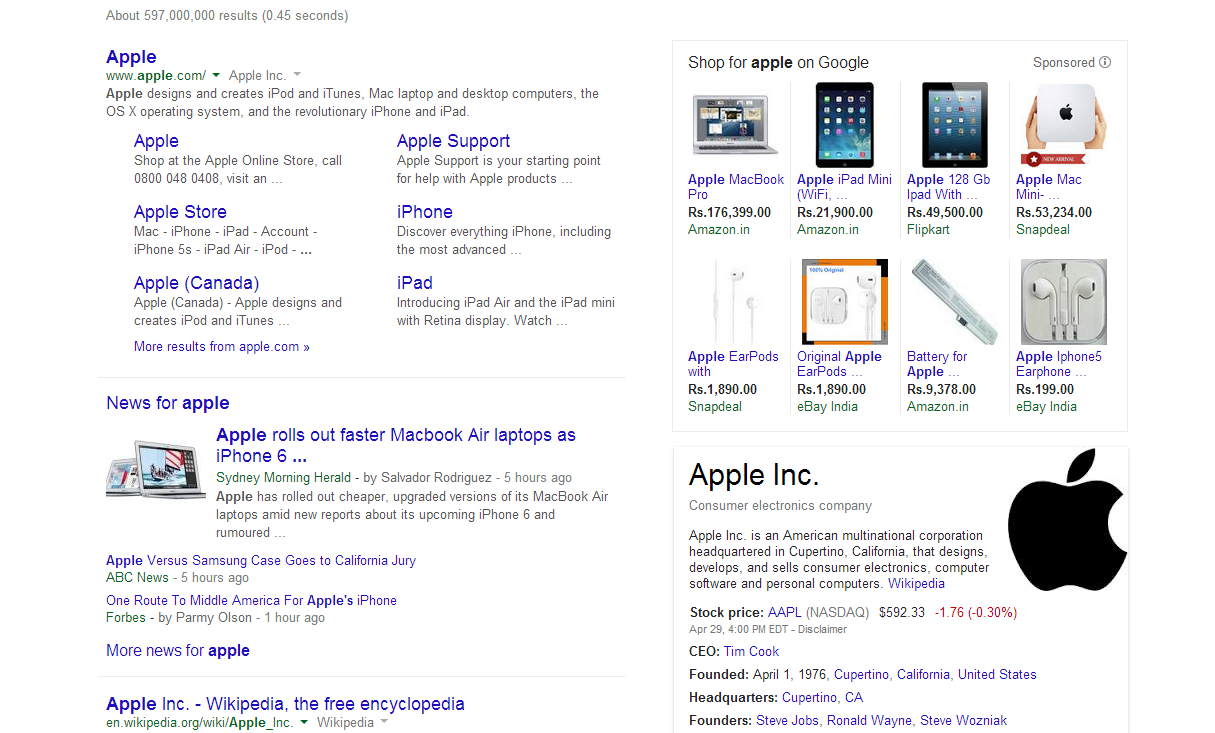The World Wide Web has become a powerful tool today. The reach, neutrality and opinion-building process that the internet provides are exceptionally high when compared to traditional mediums. Today, millions of individuals are able to create a life out of the internet and that is the beauty of it all. For businesses, the internet has opened up massive opportunities to interact and showcase their brands and services to people who are in fact potential customers. This targeted approach is difficult to come by in the real world. With such opportunity comes the inevitable- competition. This competition has been the single driving force for search engine optimization, to be seen and heard ahead of your competitors.
SEO – Do it right and you become a superstar
SEO is tricky. Google, the grand daddy of search has been a pivotal fulcrum in shaping the fortunes of many businesses. The sheer volume of search enquires of Google are in itself a definitive case study on how web traffic influences purchasing decisions and opinions about products and services. Their search criteria updates are eagerly awaited and have an overpowering effect on search engine optimization. The mad scramble for space online spawned the PPC wars. Massive budgets are allocated towards this.
An interesting shift that happened in 2013 was the introduction of semantic search. Semantic search seeks to improve search accuracy by understanding searcher intent and the contextual meaning of terms as they appear in the searchable data space, whether on the Web or within a closed system, to generate more relevant results. Well, this is the technical description given by Wikipedia. To make things simpler, semantic search is a predictive search algorithm that incorporates location, intent, relevance, language and other such variables to provide relevant results. Long tail keywords are also an update that enhances and drills down results to a T. This allows you to be extremely specific in your search and it also makes PPC very tricky.
Some of the biggest names in business today dominate brand name search on the web. Take for example the largest company of them all — Apple. You would think that if you type in apple, you may just find the common fruit in search results. You are in for a surprise! If you do want to find the fruit, you will need to be specific, and I mean super specific — Apple (fruit).
The same goes for generic brand names such as Orange which gives you the cellular company as against orange the fruit. They have been able to eliminate ultra generic names from search and insert their own companies and brands. One of the key reasons is that these search results rely on user-generated content too, and I do not need to tell you more about user-generated content when it comes to Apple, it runs into millions of pages.
PPC – How the big boys do it
Do a quick search on top e-commerce sites and you will invariably find PPC ads even when searching for specific brand names. To stay in the game, businesses have to go to such extremes to stop their competitors from using their names against themselves! E-commerce sites have it very tough when it comes to PPC and so do digital marketing agencies and such others. Invariably, budgets are important when it comes to PPC campaigns. This, coupled with shrewd keyword research makes a huge difference to your paid search traffic.
There is tons of user-generated content that is closely linked to your SERP. Most of the big guns leverage this beautifully to max out on search. The best and perfect mix is hard to find today due to the dynamic nature of how the internet works. A massive presence online does not really convert to better business always, though you could say that brand building and connections are indeed created and nurtured. If you have a good product, be sure to put in your 2 cents of effort towards a reasonable presence, because it really doesn’t matter how good the product is, it needs to be found to sell well.
Alt tagging of brand images
Image search is important today. It is part and parcel of the internet age and you just cannot forego it. Alt tagging every image that goes out into the internet from your resources ensures that you perform well on SERP. The crawlers do take this into account when indexing your pages.
Google+
I clearly do not understand the aversion people have towards this social networking site. It is owned by Google for heaven’s sake! They control web traffic like no other and so you might as well sell your soul to the devil! (There is no harm in it). Get out there and connect your online presence strongly to your Google+ account. Author bios also help in quick indexing. Appearing on the knowledge graph section on the search page is validation of your online presence.
Social media
Your social media presence plays an important role in search engine optimization too. Constant contact, updates and conversations allow your brand to be visible which in turn creates a whole lot of user-generated content. This is intrinsically tied to SERP. Never shy away from social interaction of the digital kind. It may backfire sometimes but then you can always cut your losses when compared to what you will be losing out if you do not participate at all.
Content
In a previous post here, I had specifically outlined the need for content and how Google loves it (The same with Bing or any other search engines). Content plays a vital role in allowing indexing crawlers to navigate easily and verify your website. Use keywords in an intelligent manner and know which keywords to use.
Working through SEO is a complicated task today. It has to be done in a systematic manner and should encompass the various nuances of the internet. Intense keyword research, appropriating value to these keywords and using your SEO budget smartly are just drops in the ocean. With a holistic approach to SEO than a purely technical one, you stand a very good chance at getting noticed.






